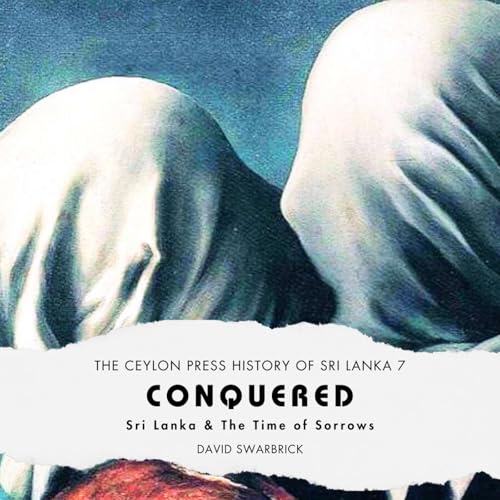In the previous 100 years Sri Lanka’s little Vijayan kingdom twice risked absolute oblivion, courtesy of its carefree kings. But twice too, in the following 170 years, the self-same state would step up, and prosper beyond all expectations, thanks to two other kings, both innate masters of nation building. For Pandu Kabhaya, and his grandson, Devanampiya Tissa, were to set the mark way beyond what any other island leader might later hope to achieve and, in the rarified world of royal hustings, emerge as the nation’s two greatest monarchs by a country mile, Like the prize ride in a fairground big dipper, that such a double-double whammy should even have happened is about as rare as throwing a dozen sixes in Monte Carlo. But little else should be expected of the Vijayans, the luckiest of all the dynasties, for whom every cloud had not one, but several, silver and gold, linings. “The teeth of the dog that barks at the lucky man,” avowed a somewhat orthodontist-orientated Singhala folk saying, “will fall out”. If true, then over the reigns of Pandu Kabhaya (437 - 367 BCE ) and Devanampiya Tissa (307 - 267 BCE), the island’s dogs would have been on a strict milk-and-roti diet, to better manage their missing molars. Over this period, the tiny Vijayan state was radically expanded, endowed with a magnificent capital city (Anuradhapura); distinct laws; civil and administrative infrastructure; investments in agriculture and water harvesting; increased trade; and a new language – the earliest inscriptions in Sinhalese date from close to this period. And, most critically of all, a new religion – Buddhism. The subtle and profound chemistry between these manifold factors were to combine to create, like the rarest of new life in a petri dish, not just the world’s only Singhala state; but one that would still be flourishing, despite all manner of catastrophes encountered along the way, today. Pandu Kabhaya’s (improbably long) 70-year reign (437 to 367 BCE ) would have come as a blessed relief to family and subjects alike after so much earlier dynastic squabbling. Having outsmarted, out-manoeuvred, foiled, defeated, imprisoned, and killed nearly all his troublesome uncles, he took up his place as victorious head of the fledgling Vijayan dynasty and set in train the real beginnings of the Anuradhapura Kingdom when he made his home in the future capital and, in Louis XIV-style, began building. By then the site of Anuradhapura was already some 200 years old and covered over 20 acres. Pandu Kabhaya took it to still greater heights for what followed was, to paraphrase Deborah Kerr and Carey Grant many centuries later, "the nearest thing to heaven". In all areas of enterprise - from farming and engineering to administration and construction, his rule harnessed the best available expertise to build a capital with the hugest of hearts, and through it, dominate an entire island. In the style of the much later and far away William the Conqueror and Doomsday Book, this king too commissioned a massive survey to take full stock of his domain – all the better the tax and manage it, plan investments, patronage, defence and yet further ascendency. A later medieval record from just one location – Kurunegala – states that the king formed 1,000 new villages in the area, his grandson later despatching pedigree Indian buffalos to graze there. Even allowing for the exaggeration of breathless flunkies; even knocking one zero off the total, it still amounts to colossal development. Some thirty men were appointed in this area alone to be at the king’s specific executive command, overseen by one Alakeswara Mudiyanse, a man whose name alone has survived these many hundreds of years. From Anuradhapura right across the Rajarata – the King’s country – and quite probably beyond, the royal writ ran. It encompassed old settlements and new ones too, exacting a political and social domination that would have placed the kingdom at the apogee of the other competing island societies that co-existed with it, for a time at least, and especially to the east and south. In what was most probably something of a first for the Vijayan state, Pandu Kabhaya’s rule respected his Vedda allies, the Yakkhas, Cittaraja and Kalavela, clans of the island’s earliest original inhabitants. They had, after all, most likely been keen and critical allies in his fight against his many uncles. Now was the time for reward. The Mahavamsa records his beneficial diligence: ““He settled the Yakkha Kalavela on the east side of the city, the Yakkha Cittaraja at the lower end of the Abhayatank…and on festival-days he sat with Cittaraja beside him on a seat of equal height, and having gods and men to dance before him, the king took his pleasure, in joyous and merry wise.” Few areas of urban development escaped his planners’ eyes and The Mahavamsa elaborates that “he laid out four suburbs as ...
Show more
Show less
 28 mins
28 mins 22 mins
22 mins 24 mins
24 mins 19 mins
19 mins 20 mins
20 mins 21 mins
21 mins 22 mins
22 mins 23 mins
23 mins
